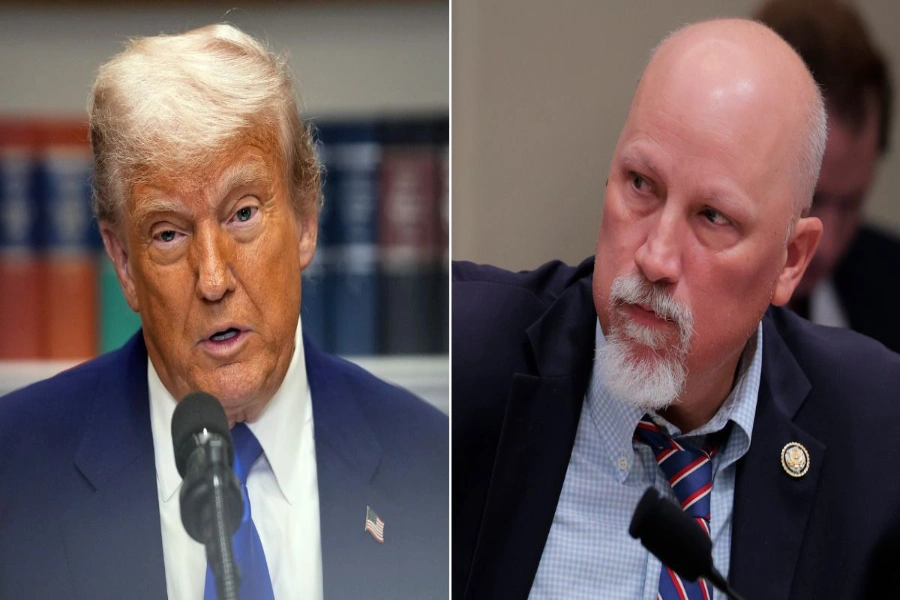The term “Big Beautiful Bill” recently gained attention as the House Budget Committee advanced a major legislative package championed by former President Donald Trump. This bill represents a multitrillion-dollar domestic policy initiative, touching on critical areas such as immigration enforcement, military spending, tax cuts, and social program reforms. Understanding the implications of this bill requires not only political awareness but also a thorough legal and constitutional analysis.

What is the Big Beautiful Bill?
The bill primarily focuses on extending Trump’s 2017 tax cuts, increasing funding for immigration enforcement and the military, and making cuts to programs such as Medicaid, food assistance, and clean energy subsidies. These elements combine to form a large-scale fiscal policy that impacts millions of Americans.
The House Budget Committee narrowly passed the bill with a 17-16 vote, reflecting sharp partisan divisions. While it signals progress for the Republican agenda, it still faces hurdles in the House and Senate before becoming law.
Legal Foundations and Congressional Authority
From a constitutional perspective, Congress holds broad powers to regulate federal spending and taxation under Article I, Section 8 of the U.S. Constitution. The power to tax and allocate funds is central to federal governance, giving Congress the authority to design budgets and policies reflecting political priorities.
However, this authority is not without limits. The bill’s proposed Medicaid cuts and other social program reforms raise potential legal and ethical concerns. Medicaid is a jointly funded federal-state program subject to both federal statutes and state-level rules. Significant changes to eligibility or funding could face legal challenges, especially if they violate rights established under prior laws or result in discrimination.
Moreover, tax policy changes must comply with constitutional principles, including the requirement that all revenue measures originate in the House of Representatives and the need to avoid unconstitutional discrimination among taxpayers.
Immigration Enforcement and Legal Challenges
One of the bill’s most contentious aspects is the expanded funding for immigration enforcement. While Congress can appropriate funds to federal agencies like ICE (Immigration and Customs Enforcement), such measures often spark debate over civil rights, due process, and humane treatment of immigrants.
Legal experts warn that aggressive immigration enforcement may lead to increased litigation regarding constitutional protections for immigrants, including the right to due process under the Fifth Amendment. Courts have previously ruled on cases involving unlawful detentions, family separations, and asylum seekers’ rights, setting important precedents that could shape how this bill’s provisions are implemented.

Environmental and Energy Policy Considerations
The bill proposes cuts to clean energy subsidies, which has raised environmental and economic concerns. From a legal standpoint, these cuts could affect compliance with federal environmental regulations and international commitments, such as those under the Paris Agreement.
States and environmental advocacy groups may challenge reductions in funding for renewable energy projects, arguing that such cuts undermine public health and violate statutory mandates for clean energy development.
Political Dynamics and Future Outlook
The passage of the Big Beautiful Bill hinges not only on legislative negotiation but also on judicial scrutiny. Courts may become arenas for disputes over the bill’s provisions, especially if they affect vulnerable populations.
Republican leaders’ attempts to secure conservative hardliners’ votes by modifying Medicaid work requirements and clean energy subsidies demonstrate the delicate balance of policy and political strategy involved.

Practical Implications for Citizens
For ordinary Americans, the bill could bring both benefits and hardships. Supporters argue that tax cuts and increased defense spending strengthen national security and economic growth. Critics warn that social program cuts could exacerbate inequality and reduce access to essential services.
Conclusion
The “Big Beautiful Bill” reflects a pivotal moment in American legislative and political discourse. While it promises to deliver sweeping tax cuts, bolster immigration enforcement, and enhance military spending, it simultaneously introduces deep cuts to social programs that millions depend on. From a legal standpoint, the bill raises significant constitutional and statutory questions that are likely to be tested in courts if enacted.
The duality of the bill — offering economic stimulus through tax relief while potentially reducing protections for vulnerable populations — illustrates the complexity of modern policymaking. As the legislation advances, its ultimate fate will depend not only on political will but also on legal endurance. For policymakers, legal scholars, and citizens alike, the “Big Beautiful Bill” is more than a budget—it’s a battle over national values, governance priorities, and the rule of law in America’s evolving democracy.
FAQ
Q1: What is the “Big Beautiful Bill”?
A: It is a large domestic policy package proposed by House Republicans focusing on tax cuts, immigration enforcement, military funding, and social program reforms.
Q2: Is the bill legally constitutional?
A: Generally, Congress has the constitutional authority to pass budgetary and tax laws, but some provisions—especially Medicaid cuts and immigration policies—may face legal challenges based on existing federal laws and constitutional protections.
Q3: How will the bill affect immigration enforcement?
A: It increases funding for agencies like ICE, potentially leading to stricter enforcement but also raising concerns over civil rights and due process.
Q4: Could the bill impact environmental policies?
A: Yes, proposed cuts to clean energy subsidies could reduce funding for renewable energy initiatives and may be contested legally by states or environmental groups.
Q5: What are the next steps for this bill?
A: After passing the House Budget Committee, it must clear the House Rules Committee and full House vote before moving to the Senate, where it faces further debate and possible amendments.

